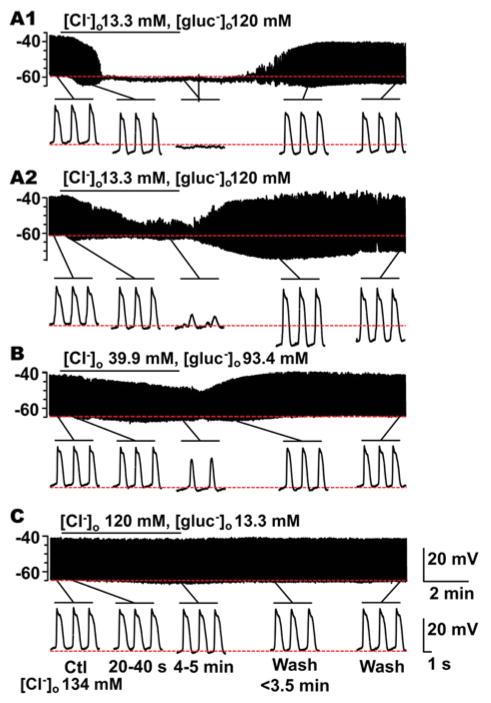Fig. 1.
The effect of replacing extracellular chloride, [Cl−]o with gluconate on slow wave activity recorded from mouse jejunal smooth muscle layer. Replacement of [Cl−]o by gluconate significantly altered slow wave properties in a concentration dependent manner (see Fig. 2). A1, A2-C, Representative traces of intracellular recording made in [Cl−]o/[gluconate−]o: 13.3/120 mM (A1, A2); 39.9/93.4 mM (B); and 120/13.3 mM (C), respectively. Control [Cl−]o was 134 mM. In 5 out of 9 experiments, slow waves were abolished (A1). In the remaining 4 experiments, small amplitude residual slow wave activity was observed (A2). The horizontal bar over each trace indicates the perfusion period of low [Cl−]o solution. Expanded time scales are shown at the bottom of A1, A2, B, and C with different time points before and after the low [Cl−]o perfusion.

